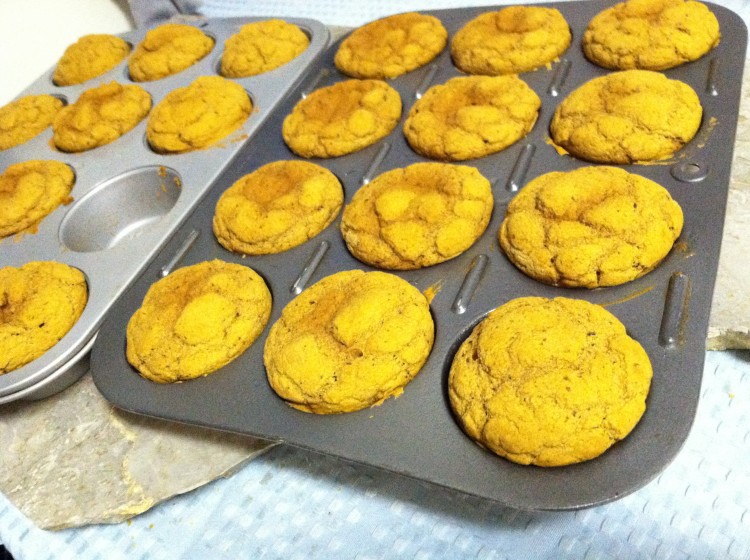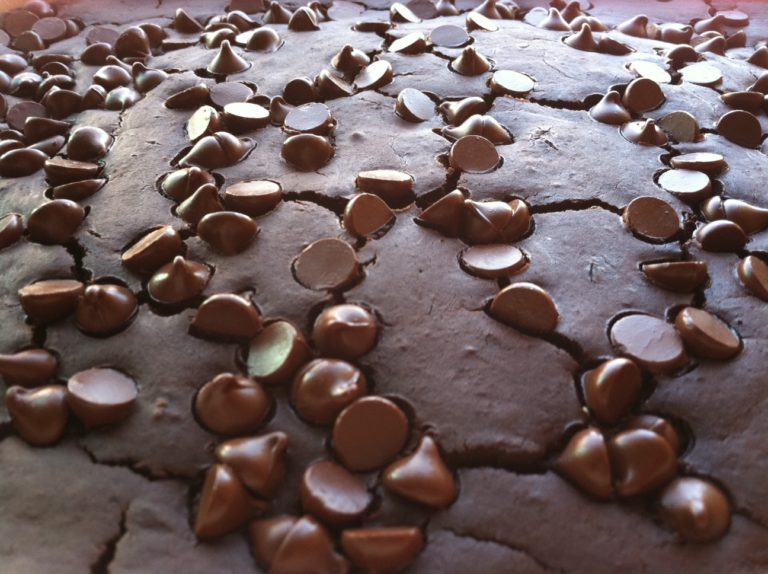The Black Eyed Peas & Korn…salad in a jar
To get hyped up for running or working out at the gym, I require two things: an adequately fueled body, and some heart pounding music. So when I created a recipe that actually fulfilled both of these needs, sort of…I got so excited!
I’ve been running since 1997 when I worked at Rodale Press, publishers of Runner’s World. I actually worked in the Men’s Health book division, but the Runner’s World people convinced me to try running and it absolutely changed my life.
My music selection has changed over the years. I hadn’t even heard of the Black Eyed Peas until 2004, when a friend of mine, upon hearing about my move to California, said, “You should look up my friend Fergie when you get there. She’s in this group called “The Black Eyed Peas.” Well, I was moving to Cali to co-host a cooking show. I had not yet heard of The Black Eyed Peas, but I didn’t look up Fergie because I had my own thing to focus on.
Sometime later I stumbled upon their music and fell in love with the song, “Let’s get it started in here.” That’s an awesome running song, especially when you want to quicken your pace. I run almost daily on the Santa Monica beach path and I’ve heard that Fergie does too. Maybe one day I’ll get to meet her and tell her about our mutual friend from back east.
Another of my all-time favorite workout songs is “Freak on a Leash” by Korn. I love to run or jump rope really fast to that song. The thought of it makes me want to get outside and just take off running!!
While talking to someone about a black eyed pea salad I said, “I haven’t made black eyed peas since I was in culinary school.” This person was saying that some people add corn to the salad and I chimed in, “Well, that’s a great idea because corn is a grain and it complements the protein in the black eyed peas.” Each is deficient in an essential amino acid, making them incomplete proteins, but when you combine them, they make a complete protein. However, even adding corn doesn’t necessarily give you enough protein to help you adequately rebuild muscle after exercise.
I was just reading a study about the benefits of adequate animal protein in relation to what the researchers termed “appendicular skeletal muscle mass,” which refers to the muscle mass on our arms and legs. As we get older, these muscles easily diminish unless we perform strengthening exercises and eat adequate animal protein. It’s actually quite difficult to get ample, whole food protein sources on a vegetarian diet.
The study looked at diet and exercise data collected from 2,425 individuals who were 50 years old or older. They found that adequate, high quality protein made a difference in muscle preservation in exercising and non-exercising individuals, but of course, those who exercised had the highest percentage of muscle mass on their extremities compared to those who were sedentary. However, obese subjects who exercised and ate less than 70g of protein per day, had less muscle mass than their sedentary counterparts who also ate less than 70g of protein per day. This means that exercising and not replenishing protein stores will cause your body to essentially feed off its self.
Your body uses protein for more than just building muscles. In fact, building muscle mass is not a priority. Your body’s priority is maintaining your immune system and making enzymes and hormones. So if you breakdown body protein during exercise and use it for fuel, your body isn’t worried about replenishing those muscle protein stores. Your body wants to survive, and having a bunch of bulky muscles is not survival. However, if you don’t make an effort to eat adequate protein, then you will see the effects as you age and your body begins to fall apart. So do yourself a favor and enjoy each meal with a bunch of vegetables, a little whole grain or starchy vegetables, and a 3-4oz portion of protein rich foods about the size of the palm of your hand.
Here is a wonderful recipe to get you started on the right path to optimal recovery and longevity.
Black Eyed Peas & Korn Salad
·1 medium red pepper, finely chopped
·1 small green pepper, finely chopped
·1/2 cup thinly sliced red onion, about 1 inch long
·1 jalapeno, minced (seeds & ribs removed)
·1 can Eden organics black eyed peas
·1 1/2 cups frozen yellow corn, cooked & cooled
·1/2 cup chopped parsley
·1/4 cup brown rice vinegar
·1 Tbsp extra virgin olive oil
·1 tsp honey
·1/4 tsp ground black pepper
·1/8 tsp sea salt
1.Heat corn on the stove in a small sauce pot, about 5 minutes until thawed. Place cooked corn in the refrigerator while you prepare the rest of the ingredients.
2.In a large mixing bowl, combine the brown rice vinegar, olive oil, honey, black pepper & sea salt. Whisk ingredients together with a fork.
3.Chop the peppers & onions and add to the mixing bowl. Drain the can of black eyed peas and add to the bowl. Add the corn & the parsley & toss to combine all ingredients.
Cost per serving: $1.39
Nutrients per serving (1 cup/ 187g): Calories: 180, Fat: 4g, Carbs: 29g, Protein: 7g, Fiber: 6g, Sugar: 6g, Sodium 70mg
% Daily Value (DV):
Vitamin A: 20%, Thiamin-B1: 13%, Riboflavin-B2: 5%, Niacin-B3: 14%, Vitamin B6: 14%, Vitamin B12: 0%, Vitamin C: 127%, Vitamin D: 0%, Vitamin E: 5%, Folate: 39%, Pantothenic Acid: 5%, Calcium: 3%, Copper: 11%, Iron: 13%, Magnesium: 12%, Manganese: 20%, Phosphorus: 14%, Potassium: 11%, Selenium: 3%, Zinc: 7%
Black Eyed Pea & Corn Salad
served with Broiled Chicken, Brown Rice on a bed of Fresh Herbs
To make quick broiled chicken:
·4-oz boneless, skinless, chicken breast
·1 Tbsp lemon juice
·Dash sea salt & pepper
1.Preheat oven on broil or high heat, at least 450 degrees. Place a cast iron or stainless steel skillet about 6 inches from the top oven coil and allow it to heat for about 10 minutes. If the handle is not oven safe, wrap it thoroughly in aluminum foil before placing in the oven.
2.While the pan is heating, rinse the chicken, pat it dry and either pound the chicken to about a half inch thickness, or cut the breast down the middle. Season with lemon juice, salt & pepper.
3.Place the chicken breast on the skillet and cook about 10 minutes, or until the juices run clear when pierced at the thickest part. The internal temperature should be 165 degrees Fahrenheit. If you use chicken with the skin on, place the breast on the skillet skin side up. When the chicken is done, cut into thin strips to add to your salad.
4.To a salad bowl, add one cup chopped herbs or finely chopped salad greens. Top with one cup of the black eyed peas & corn salad plus 1/2 cup leftover brown rice, quinoa, or other cooked grain (This should be a staple in your fridge. But if you omit, you can add an extra half cup of the black eyed pea salad instead). Top with the chopped chicken, toss everything to combine flavors and enjoy.
 NOTE: If you’re taking this meal to work, use a large mason jar, or any jar or thermos that holds at least 2 cups of liquid. Place one cup of black eyed pea and corn salad on the bottom, follow with 1/2 cup brown rice, quinoa or other cooked grain, then add the chopped chicken breast and fresh chopped herbs or finely chopped salad greens. Take a plate or medium sized salad bowl with you. When you take a lunch break, simply turn your jar upside down onto your plate or into your bowl, and enjoy your perfectly flavored salad.
NOTE: If you’re taking this meal to work, use a large mason jar, or any jar or thermos that holds at least 2 cups of liquid. Place one cup of black eyed pea and corn salad on the bottom, follow with 1/2 cup brown rice, quinoa or other cooked grain, then add the chopped chicken breast and fresh chopped herbs or finely chopped salad greens. Take a plate or medium sized salad bowl with you. When you take a lunch break, simply turn your jar upside down onto your plate or into your bowl, and enjoy your perfectly flavored salad. Cost per serving: $2.88
Nutrients per serving (1 cup black eyed pea & corn salad + 1/2 cup brown rice + 4oz broiled chicken + 1 cup fresh herbs/ 451g): Calories: 456, Fat: 8g, Carbs: 53g, Protein: 43g, Fiber: 10g, Sugar: 6g, Sodium 178mg
% Daily Value (DV):
Vitamin A: 50%, Thiamin-B1: 25%, Riboflavin-B2: 19%, Niacin-B3: 109%, Vitamin B6: 43%, Vitamin B12: 4%, Vitamin C: 219%, Vitamin D: 3%, Vitamin E: 15%, Folate: 56%, Pantothenic Acid: 18%, Calcium: 11%, Copper: 23%, Iron: 33%, Magnesium: 35%, Manganese: 73%, Phosphorus: 44%, Potassium: 27%, Selenium: 53%, Zinc: 21%
 NOTE: If you’re taking this meal to work, use a large mason jar, or any jar or thermos that holds at least 2 cups of liquid. Place one cup of black eyed pea and corn salad on the bottom, follow with 1/2 cup brown rice, quinoa or other cooked grain, then add the chopped chicken breast and fresh chopped herbs or finely chopped salad greens. Take a plate or medium sized salad bowl with you. When you take a lunch break, simply turn your jar upside down onto your plate or into your bowl, and enjoy your perfectly flavored salad.
NOTE: If you’re taking this meal to work, use a large mason jar, or any jar or thermos that holds at least 2 cups of liquid. Place one cup of black eyed pea and corn salad on the bottom, follow with 1/2 cup brown rice, quinoa or other cooked grain, then add the chopped chicken breast and fresh chopped herbs or finely chopped salad greens. Take a plate or medium sized salad bowl with you. When you take a lunch break, simply turn your jar upside down onto your plate or into your bowl, and enjoy your perfectly flavored salad. 



